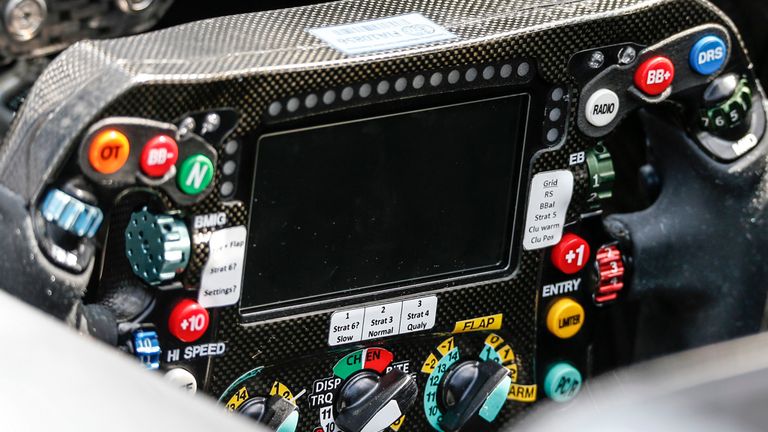Lewis Hamilton says his Baku race felt 'dangerous' due to radio ban
"I was just looking at my steering wheel for a long portion of the lap," admits Lewis; "We need to look at the rules," adds Toto Wolff
Monday 20 June 2016 13:12, UK
Lewis Hamilton says it felt 'dangerous' in his Mercedes car as he desperately sought a fix for his engine malfunction during Sunday's European GP.
Although Mercedes were able to let their driver know that an incorrect engine mode was causing the power deployment from his engine to fluctuate, the sport's new-for-2016 radio clampdown prevented the team from telling Hamilton how to apply a fix.
Increasingly frustrated and bewildered by the problem, Hamilton spent more than ten laps, all the while travelling at speeds of up to 220mph, trying to find the correct setting before his car finally returned to full power.
"Dangerous," replied Hamilton when asked how he felt in the car. "I was just looking at my steering wheel for a long portion of the lap. All the way down the straight l was just looking at my wheel."
The sight greeting Hamilton may have even confused a NASA astronaut. According to Hamilton, the Mercedes steering wheel offers up to "16 different engine positions and, in those engine positions, another 20 positions."
While both Mercedes cars were affected by the same engine problem, the predicaments presented to their two drivers were significantly different. While Hamilton had to fathom the correct setting for an engine configuration wrongly prescribed before the race, race leader Rosberg had just changed his setting when he was told by the team he was in the wrong mode.
Switching it back was a far more straightforward process for the German than the complex challenge Hamilton, effectively shooting in the dark, had to grapple with as he hurtled around the Baku circuit.
"I didn't know what the problem was so l didn't know if l had done something to make it not work," said Hamilton.
"All they could tell me is that there was a switch error of some sort. I was looking at every single switch thinking 'am l being an idiot here? Have l done something wrong?' And l hadn't. I was looking through all these switch positions and there was nothing that looked irregular."
Mercedes attributed the error, made before the race, to a "messy Friday" and confirmed they sought guidance from the FIA, the sport's governing body, about the restrictions on what they could tell Hamilton and Rosberg.
Mercedes explain Lewis Hamilton's power problems in European GP
"Because of the regulations, we couldn't tell the drivers and they had to figure it out for themselves," said team boss Toto Wolff. "Nico was in the more fortunate situation that he had done a switch change before which led him on the right path."
Wolff also absolved Hamilton of any blame for not applying a fix sooner.
"I don't think it is down to homework," he told reporters. "Simulator work wouldn't have helped in any way, it was very complicated to find the right setting."
European Grand Prix driver ratings
Hamilton's confusion, and subsequent confession that the situation felt dangerous, is bound to re-open the debate about the use of team radio in F1 and how any sort of clampdown should be defined.
"The radio ban was supposed to ban driver aids but this was a technical issue," the world champion noted.
A concurring Wolff added: "I think we need to look at the rules. This is not me complaining, it is the same for everyone, but we can do two things: either make the cars less complicated, which l don't think we should do, or adjust the rules so that we can communicate with the drivers more when they have a problem."
In the meantime, Hamilton has another more immediate problem to contend with: after crossing the line a distant fifth in Baku, he now trails Rosberg by 24 points in the drivers' championship, almost the equivalent of a full race victory.
Don't miss the F1 Report: Baku review on Sky Sports F1 at 8.30pm on Wednesday with Natalie Pinkham, Marc Priestley and Mark Gallagher




